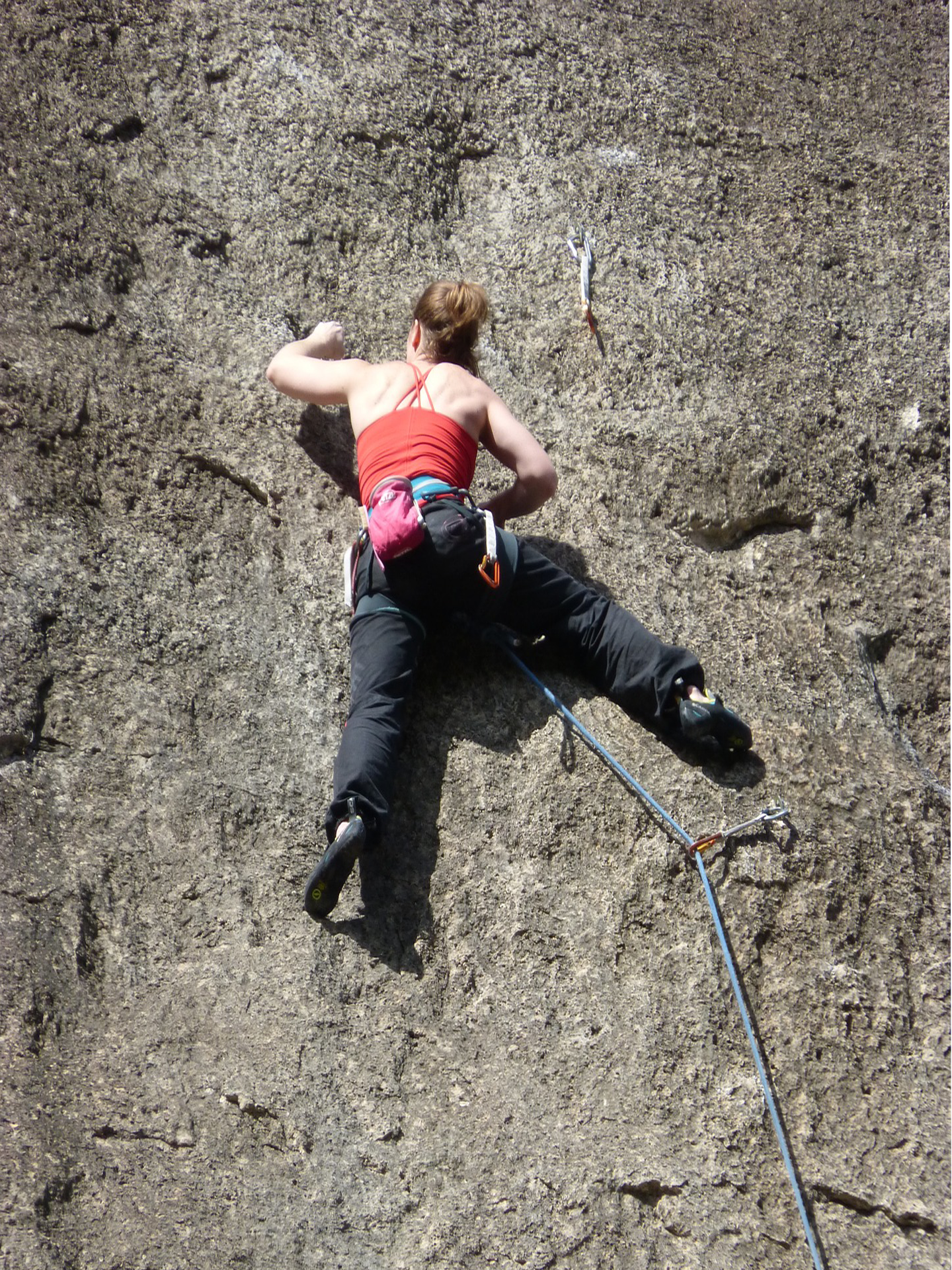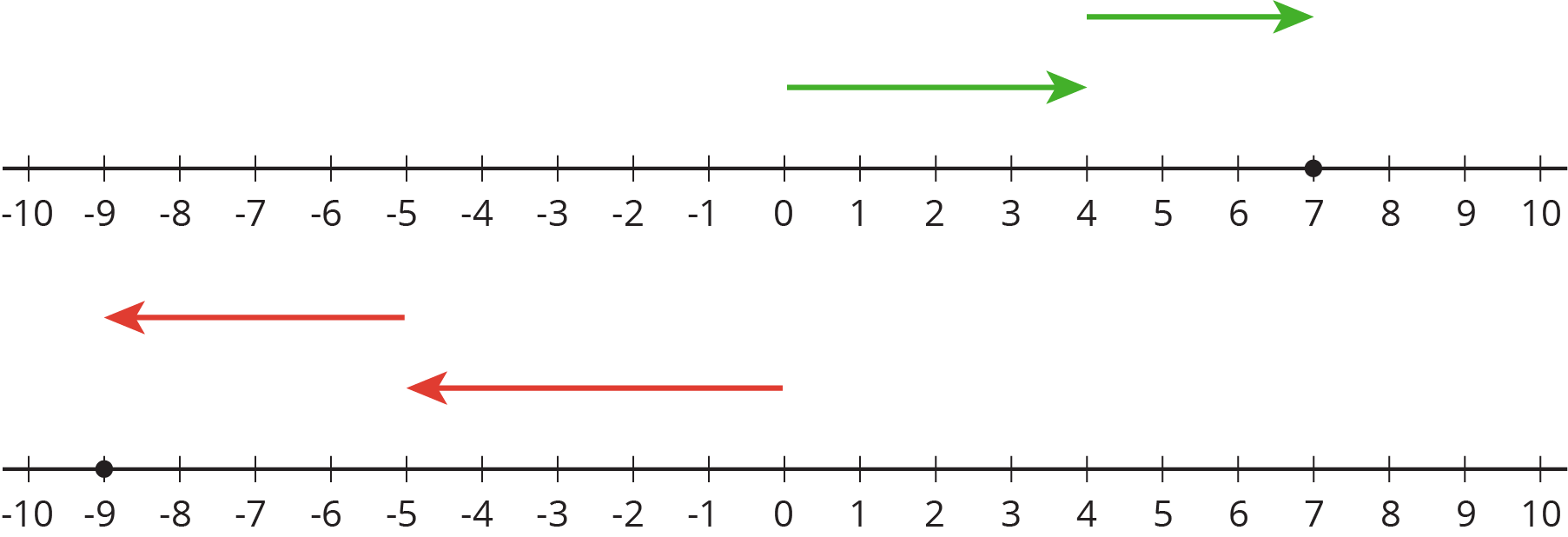Lesson 3
Changing Elevation
Let's solve problems about adding signed numbers.
3.1: That's the Opposite
-
Draw arrows on a number line to represents these situations:
-
The temperature was -5 degrees. Then the temperature rose 5 degrees.

-
A climber was 30 feet above sea level. Then she descended 30 feet.

-
-
What’s the opposite?
-
Running 150 feet east.
-
Jumping down 10 steps.
-
Pouring 8 gallons into a fish tank.
-
3.2: Cliffs and Caves
Explore the applet and then answer the questions.
-
A mountaineer is climbing on a cliff. She is 200 feet above the ground. If she climbs up, this will be a positive change. If she climbs down, this will be a negative change.

-
Complete the table.
starting elevation
(feet)change
(feet)final elevation
(feet)A +200 75 up B +200 75 down C +200 200 down D +200 +25 -
Write an addition equation and draw a number line diagram for B. Include the starting elevation, change, and final elevation in your diagram.
-
-
A spelunker is down in a cave next to the cliff. If she climbs down deeper into the cave, this will be a negative change. If she climbs up, whether inside the cave or out of the cave and up the cliff, this will be a positive change.
-
Complete the table.
starting elevation
(feet)change
(feet)final elevation
(feet)A -20 15 down B -20 10 up C -20 20 up D -20 25 up E -20 -50 -
Write an addition equation and draw a number line diagram for C and D. Include the starting elevation, change, and final elevation in your diagram.
-
-
What does the expression \(\text-45 + 60\) tell us about the spelunker? What does the value of the expression tell us?
3.3: Adding Rational Numbers
Find the sums.
- \(\text- 35 + (30+ 5)\)
- \(\text- 0.15 + (\text- 0.85) + 12.5\)
- \(\frac{1}{2} + (\text- \frac{3}{4})\)
Find the sum without a calculator.
\(\displaystyle 10 + 21 + 32 + 43 + 54 + (\text- 54)+ (\text- 43)+ (\text- 32)+ (\text- 21) +(\text- 10)\)
3.4: School Supply Number Line
Your teacher will give you a long strip of paper.
Follow these instructions to create a number line.
- Fold the paper in half along its length and along its width.
- Unfold the paper and draw a line along each crease.
- Label the line in the middle of the paper 0. Label the right end of the paper \(+\) and the left end of the paper \(-\).
- Select two objects of different lengths, for example a pen and a gluestick. The length of the longer object is \(a\) and the length of the shorter object is \(b\).
- Use the objects to measure and label each of the following points on your number line.
\(a\)
\(b\)
\(2a\)
\(2b\)
\(a + b\)
\(\text-a\)
\(\text-b\)
\(a + \text-b\)
\(b + \text-a\)
-
Complete each statement using <, >, or =. Use your number line to explain your reasoning.
- \(a\) _____ \(b\)
- \(\text-a\) _____ \(\text-b\)
- \(a + \text-a\) _____ \(b + \text-b\)
- \(a + \text-b\) _____ \(b + \text-a\)
- \(a + \text-b\) _____ \(\text-a + b\)
Summary
The opposite of a number is the same distance from 0 but on the other side of 0.

The opposite of -9 is 9. When we add opposites, we always get 0. This diagram shows that \(9 + \text-9 = 0\).

When we add two numbers with the same sign, the arrows that represent them point in the same direction. When we put the arrows tip to tail, we see the sum has the same sign.

To find the sum, we add the magnitudes and give it the correct sign. For example, \((\text-5) + (\text-4) =\text - (5 + 4)\).
On the other hand, when we add two numbers with different signs, we subtract their magnitudes (because the arrows point in the opposite direction) and give it the sign of the number with the larger magnitude. For example, \((\text-5) + 12 = +(12 - 5)\).
